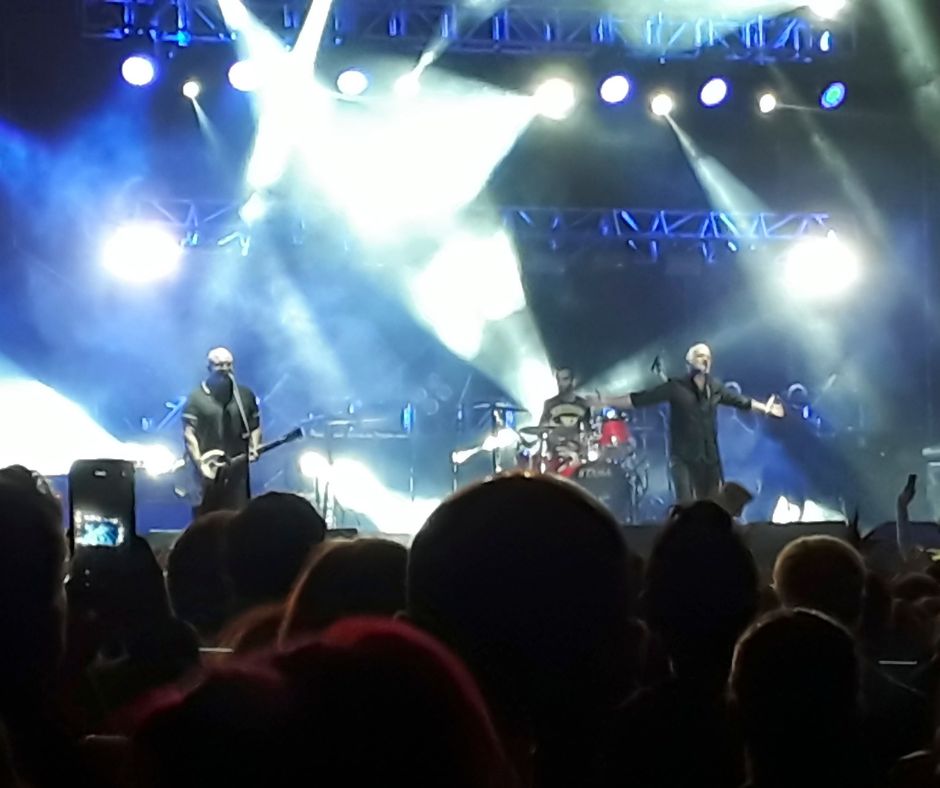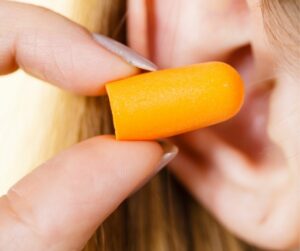Sound Off: Protecting Your Hearing Effectively

Amidst a world where every sound forms a narrative within life’s symphony, the cherished gift of hearing remains pivotal. Yet, modern noise poses an insidious threat to this precious ability. Urgent action is needed to safeguard your hearing. Gradual hearing loss erodes the vibrancy of life. This article dives into the best hearing protection and discusses when it is required. We shed light on the essential task of shielding our ears from the perils of noise. Navigating through bustling city sounds, the hum of machinery, and the crescendos of live performances, we traverse diverse contexts, revealing the crucial role of hearing protection in preserving the intricate harmony of sound that enriches our existence.
When Is Hearing Protection Required?
The Impact of Excessive Noise Exposure
As we delve into noise exposure, the repercussions become vividly apparent. Hearing protection is not just a choice; it’s a necessity born from the profound noise-related risks. Extended or intense exposure to loud sounds can damage our delicate auditory system. This culminates in noise-induced hearing loss, where the fragile hair cells within the inner ear succumb to the onslaught of excessive noise. Over time, this damage accumulates, leading to a gradual erosion of hearing sensitivity and clarity.
How Often Is Hearing Protection Required?
The fabric of our daily routines often weaves us into environments where noise breaches safe thresholds. Construction, manufacturing, and aviation sectors expose workers to persistent noise, endangering their auditory well-being. Beyond workplaces, concerts, sporting events, clubs, and even the personal haven of music devices harbor potential risks. Urban landscapes, especially during peak traffic or bustling public events, further expose us to noise levels that can impair our hearing.
Deciphering the Need for Hearing Protection
The question of when hearing protection is requisite hinges on a crucial understanding: noise intensity. A simple guideline emerges – if raising your voice to communicate with someone at arm’s length becomes necessary, the noise is likely hazardous. Enduring sounds surpassing 85 decibels (dB) for extended periods can lead to damage. This threshold is quickly exceeded on construction sites, at rock concerts, or using power tools. A typical conversation registers around 60 dB to provide perspective, while a rock concert’s volume can escalate to an ear-piercing 120 dB. Vigilance regarding ambient sound levels marks the initial stride toward securing your auditory well-being, whether during work or leisure pursuits.
Learn about other ways to help your hearing.
Preserving Your Hearing Daily
Proactive Practices for Lasting Benefits:
Preserving your hearing is an investment that yields enduring rewards. Always ask yourself, “When is hearing protection required ?” Whenever feasible, gravitate towards quieter surroundings and curtail exposure to elevated noise levels. In environments like concerts, construction zones, or while operating power tools, deploy earplugs or earmuffs to fortify against the auditory assault. Should your professional domain teem with high decibels, prioritize donning protective gear such as earplugs or noise-canceling headphones.
Explore how to support your hearing through nutrition.
Mindful Management of Personal Audio Devices:
In the era of personal technology, safeguarding your hearing during audio device use hinges on unwavering mindfulness. Uphold a safe listening volume by adhering to the “60/60 rule” – cap the volume at 60% or less for a maximum of 60 minutes. This prudent approach thwarts the risk of swift noise-induced impairment. Additionally, contemplate investing in noise-canceling headphones. They extend immersive auditory experiences sans the necessity for excessive volume. Just as pivotal, restrict the duration of headphone usage. Extended sessions, especially at elevated volumes, subject your ears to prolonged noise levels that can gradually erode your hearing capacity. Integrate timely breaks to allow your ears respite and recovery. Embrace the notion of “sound vacations,” affording your auditory system a chance to rejuvenate following extended exposure.
Embrace Hearing Health Education:
Immerse yourself and those in your influence regarding hearing health’s significance. Try to foster understanding prudent listening habits, especially among the younger cohorts who engage extensively with personal audio devices. Nurturing a culture of conscientious sound engagement is your contribution to promoting a more wholesome auditory environment for yourself and those around you.

Understanding the Need for Hearing Protection
In environments where noise reigns supreme, hearing protection transcends being a mere suggestion—it’s an unequivocal necessity. This holds especially true for those in the construction, manufacturing, or aviation sectors. Proactive measures become the cornerstone of auditory well-being in these high-decibel workplaces.
At What Decibel Is Hearing Protection Required?
Mandatory hearing protection springs to life when noise levels ascend beyond 85 decibels (dB) over an 8-hour duration, constituting an 8-hour time-weighted average (TWA). This gold standard aligns seamlessly with the counsel of the National Institute for Occupational Safety and Health (NIOSH)’s recommendations, underscoring the imperative of adopting protective measures.
Three Situations Where You Need the Best Hearing Protection:
- Exceeding 85 dB over 8 Hours: This forms the crux of the hearing protection landscape. It encompasses workplaces and individuals regularly immersed in activities like shooting, lawn care, or employing power tools.
- Surpassing 90 dB over 8 Hours: A condition germane to stalwarts of construction and other domains constantly awash with clamor.
- Hearing Test Cues: For those demonstrating hearing loss symptoms or vulnerability, even if noise levels seem innocuous, heeding the call of hearing protection is paramount.
The insidious nature of noise-induced hearing loss demands constant vigilance. It is essential to be aware of the noise levels in your environment and to take steps to protect your hearing accordingly. You can ask yourself, “When is hearing protection required?” and consistently donning protection to help you stay vigilant.
Finding the Best Hearing Protection:
When it’s noisy, selecting the optimal hearing protection reigns supreme. Earmuffs and earplugs emerge as stalwart allies. Earmuffs embrace your ears, creating a waterproof barrier against sound waves. Meanwhile, earplugs nestle within the ear canal, barricading against noise intrusion. Both avenues resonate with efficacy, with comfort-centric selection emerging as the linchpin. Custom-molded earplugs, a pinnacle of fitting precision, offer unparalleled comfort, rendering them indispensable for individuals routinely exposed to noise’s tumultuous embrace.

Mastering the Best Hearing Protection Techniques
Optimizing Hearing Protection Usage:
The efficacy of hearing protection hinges on precise implementation. When wearing earmuffs, guarantee complete ear coverage and a secure seal. For earplug aficionados, craft a slender cylinder by rolling them and gently insert them into the ear canal. Allow them to expand so they fit snugly. Routinely scrutinize your protection gear for indications of wear or impairment. Promptly replace them when needed. Remember, hearing protection constitutes only a part of the equation – maintaining a safe distance from sources of loud noise and taking regular breaks from clamorous environments will help a lot. The best hearing protection is the avoidance of triggers.
Learn more about custom earplugs here.
What Is the Best Hearing Protection For Young Ears?
When selecting hearing protection for young ears, several factors warrant consideration. For those old enough to manage insertion, earplugs present a viable choice. Options span foam earplugs, affordable yet potentially uncomfortable; silicone earplugs, more comfortable albeit trickier to insert; and custom-molded earplugs, offering the pinnacle of comfort at a higher cost. Earmuffs, on the other hand, suit younger children unable to manage earplugs themselves. Diverse in size and style, earmuffs ensure a snug fit over hats or glasses. Electronic hearing protection is a suitable solution for regular exposure to loud noise, enhancing quiet sounds while minimizing the impact of loud ones. This technology can be particularly beneficial for children with autism or sensory processing disorders, mitigating the discomfort triggered by excessive noise. Age, comfort, fit, and noise reduction rating (NRR) remain pivotal when deciding on suitable protection. The chosen protection should offer comfort without causing discomfort, fit securely without impeding movement, and possess a higher NRR for optimal noise reduction.
At What Decibel Is Hearing Protection Required for Young Ears?
The same 85 decibel (dB) threshold for hearing protection applies to young ears as it does to adults. However, it is essential to note that young ears are more vulnerable to noise-induced hearing loss than adult ears. This is because the hair cells in the inner ear, which are responsible for hearing, are still developing in young children. If your child is around loud noise, such as at a concert or sporting event, take them to a quiet place for a few minutes every 15-30 minutes to give their ears a break. Keep the same rule when they’re using headphones, as well.

Act Now For the Best Hearing Protection
The key lessons are crystal clear: whether navigating bustling workplaces, leisure arenas, or the realms of childhood, hearing protection stands resolute as a necessity. Embracing a proactive stance through prudent practices such as maintaining safe listening thresholds, adopting protective gear, and weaving noise-free intermissions, we chart a course toward a sounder auditory horizon. In this trajectory, routine consultations with hearing experts like those at Stanford Hearing Aids emerge as paramount. These professional assessments unveil potential vulnerabilities and facilitate preemptive strategies for auditory welfare. Craft a harmonious soundscape for the days ahead by scheduling a free consultation at Stanford Hearing Aids.
